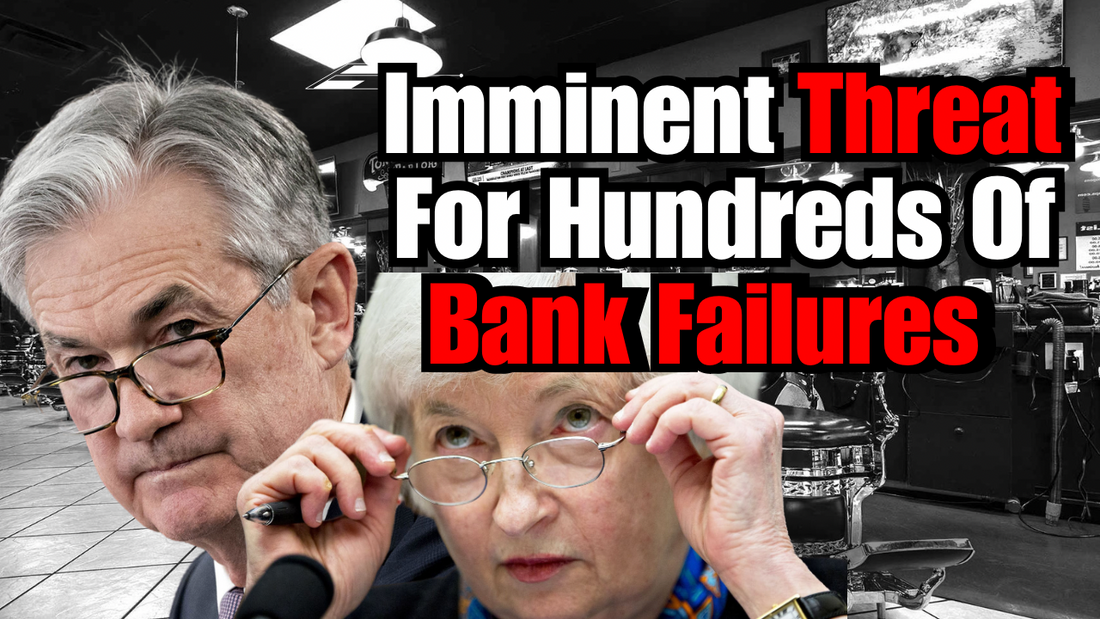Hundreds of small and regional banks across the United States are currently under significant stress. Over 280 banks are facing dual threats from commercial real estate loans and potential losses linked to higher interest rates. This has led many experts to predict an increase in bank failures or at least a significant dip below their minimum capital requirements. While these failures are not expected to hit the big banks, the rapid hikes in interest rates are causing borrowers to face more expensive loan payments. If they are unable to keep up, they may default on their loans. This has put a record $929 billion at risk.
The Crisis at Hand
About a year ago, several banks failed, freezing many people’s money in their accounts. This was particularly impactful in California but had a widespread effect on small businesses, including those using e-commerce platforms like Shopify. Many banks had extended loans originally due in 2023 to 2024, further adding to the pressure.
Regulators are working behind the scenes with at-risk lenders, issuing confidential reports advising them to raise capital. If successful, this could reduce the number of bank failures by attracting private capital to recapitalize these banks. However, banking sector acquisitions have dwindled, making it harder for struggling banks to find stronger partners to acquire them.
The Impact on Small Businesses and Communities
A significant portion of the stress is shifting to community banks, those with assets between $1 billion and $10 billion. The Claros Group analyzed 4,000 banks, screening for those with over 300% of capital in commercial real estate loans and potential losses tied to interest rates. The findings indicate that 282 U.S. banks are at risk, with nearly $900 billion in total assets. Most of these banks are smaller lenders with less than $10 billion in assets each.
Smaller banks play a crucial role in supporting communities away from the coasts, contributing to local economic development. When these banks face stress, it can hinder the growth and stability of these communities. The failure of small banks could lead to fewer options and higher costs for businesses and individuals who rely on them.
The Ripple Effect on the Economy
Regional banks, which collectively control just under $3.1 trillion in assets, are a vital source of credit for small and medium-sized businesses. The failure of these banks could force businesses to turn to larger banks, which may offer less favorable terms. This lack of competition could hurt the economy by reducing credit availability and increasing borrowing costs.
Despite the challenges, the vast majority of banks are not insolvent but are under stress. This stress can lead to subtle and gradual impacts, such as reduced investment in new branches, technology, and staffing, ultimately affecting the communities they serve.

The Role of the Federal Deposit Insurance Corporation (FDIC)
The FDIC insures deposits up to $250,000 per individual, per bank, per ownership category. This provides some reassurance that depositors will be paid back even if a bank fails. However, it is still wise for individuals to spread their funds across multiple banks to ensure all their money is protected.
Investment Opportunities Amidst the Crisis
For those looking to invest, the current situation presents potential opportunities. Smaller banks may offer higher interest rates on savings accounts as they try to attract capital. Additionally, investing in larger bank stocks or ETFs that include bigger banks could be profitable, especially if smaller banks continue to fail and get acquired by larger institutions.
Conclusion
The U.S. banking system is under considerable stress, particularly among small and regional banks. This stress is primarily due to commercial real estate loans and higher interest rates, leading to a potential increase in bank failures. While the majority of banks are not insolvent, the ongoing stress could have significant indirect effects on communities and the broader economy. As always, staying informed and understanding the market is crucial for entrepreneurs and investors looking to navigate these challenging times.


